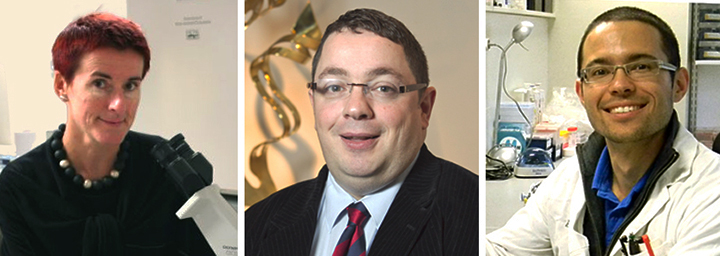In This Section
- Home
- Staff Profiles & Phone Book
- About the Department
- A History of the Department LANDING PAGE
- A history of the Department; The early years to the 1980s
- A history of the Department; The move from the Windle Building to BSI and WGB
- UCC Professors of Anatomy and Heads of Department
- The development of the UCC HUB
- Current students, recent research graduates and awards
- Useful Links
- Welcome from Head of Department of Anatomy and Neuroscience
- Study Anatomy
- Study Neuroscience
- Research
- UCC Anatomical Donations
- Biosciences Imaging Centre
- BSc Medical and Health Sciences
- News & Events
- News Archive 2024
- News Archive 2023
- News Archive 2022
- News Archive 2021
- News Archive 2020
- News Archive 2019
- News Archive 2018
- Recent Publications
- News archive 2017
- News Archive 2016
- News Archive2015
- News Archive 2014
- News Archive 2013
- News Archive 2012
- News Archive 2011
- BRAIN AWARENESS WEEK 2023
- Department Events and Conferences
- Seminar series 2019_2020
- photo galleries
- Narrowing the void Conference 2023
- Photos of BSc Medical and Health Sciences Mentoring launch 2022
- International Women's Day 2023
- 2023 BRIGHT FUTURES - Celebrating our researchers
- 2023 UCC Futures - Future Ageing & Brain Sciences
- Recent Graduations July 2023
- Anatomy and Neuroscience Top 100 Anatomy Physiology 2023
- BRAIN AWARENESS WEEK 2023 FUN AND GAMES EVENT
- Medical and Health Sciences First year class 2023
- 2023 Brain Awareness week Scientific discussion photo gallery
- World Anatomy Day 2023
- BSc MHS MENTORING PROGRAMME 2023
- BSc Medical and Health Sciences Graduation 2023
- BSc Neuroscience Graduation Photo Gallery 2023
- Dr Kathy Quane Nov 2023
- THANKSGIVING PHOTOS 2012
- Photo Gallery: Society of Translational Medicine Careers Fair 2023
- Photo Gallery:2023 TRAIN AWARDS
- Photo Gallery:2024 Creative Week St Joseph's NS
- Photo Gallery: Department of Anatomy and Neuroscience Thanksgiving Service 2024
- Photo Gallery: Professor Aideen Sullivan farewell party
- Photo Gallery: Irish Pain Society Annual Scientific Meeting Cork 2023
- Photo Gallery: 2024 Medical and Health Sciences Graduation
- Photo Gallery: Medical and Health Sciences Meet and Greet 2024
- Photo Gallery: 2024 BSC NEUROSCIENCE Graduation
- Photo Gallery: 2025 INTERNATIONAL WOMEN'S DAY
- Photo Gallery: 2025 BSc Neuroscience class and staff
- Photo Gallery: 2025 BRAIN CONNECTIONS
- BSc Neuroscience Graduation Photo Gallery 2025
- World Anatomy Day 2025
- UCC Learning and Teaching Showcase 2025
- Narrowing the Void Conference 2023
- Department of Anatomy and Neuroscience Contact Us
Delivering Sweet Solutions for Brain Disorders

Picture: Professor Caitríona O'Driscoll, Professor John F Cryan and PhD student Bruno Godinho
UCC researchers have developed an innovative strategy to deliver a therapy that successfully silences a gene responsible for the neurodegenerative condition known as Huntington’s Disease (HD).
Brain disorders affect approximately 30% of the Irish population annually with immense personal, social and economic costs.
There are two major challenges in developing therapeutic strategies for the brain. Firstly, the blood brain barrier keeps most medicines out of the brain, secondly brain cells (neurons) themselves are very difficult to penetrate in a safe manner. In tackling this later problem scientists at the School of Pharmacy and Department of Anatomy and Neuroscience at UCC have come up with an innovative strategy to deliver a therapy that successfully silences a gene responsible for the neurodegenerative disease Huntington’s Disease (HD).
Huntington’s Disease is caused by a defect in a gene called Huntingtin (HTT) that results in the accumulation of a toxic HTT protein within the brain. As a consequence nerve cells within the brain die and lead to a broad range of symptoms, most notably involuntary rapid movements. Although HD is a rare disease estimated to affect 10 people in 100,000, HD brings an enormous burden to the patient’s quality of life and the disease does not “skip generations”.
Professor Caitriona O’Driscoll (Pharmacodelivery group in School of Pharmacy, UCC) and her long standing collaborator Dr Raphael Darcy (University College Dublin) have developed sugar-based carriers called cyclodextrins which are able to encapsulate and transport molecules which silence the expression of toxic genes. In collaboration with neuroscientist Professor John F Cryan (Department of Anatomy and Neuroscience, UCC) and through the efforts of PhD student Bruno Godinho the application of this novel technology to brain disorders was made possible. They have shown that these sugar-based carriers effectively deliver silencing molecules (siRNAs) into nerve cells reducing the levels of the toxic HTT protein. Furthermore, the results obtained in cell-based models also translated to mice. Reducing the HTT messages by direct administration into the brain of a mouse model of HD resulted in alleviation of some of the motor deficits.
“This is a very encouraging breakthrough for disorders where there is often very little hope,” says Professor Cryan. “We now have an effective and non-toxic carrier which could be applied to many brain disorders especially those with genetic basis. However”, he cautions “whilst these experiments in cells and model systems are encouraging, we are still a long way from transferring this technology to human use.”
The study has recently been published online in the journal Molecular Pharmaceutics.
Department of Anatomy and Neuroscience
Anatamaíocht agus Néareolaíocht
Contact us
Room 2.33, 2nd Floor, Western Gateway Building, University College, Cork, Ireland
